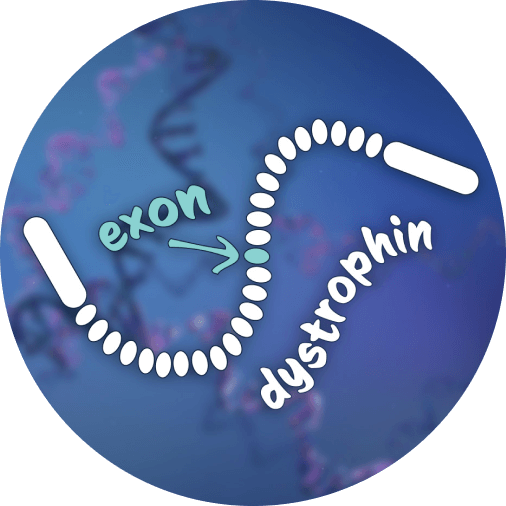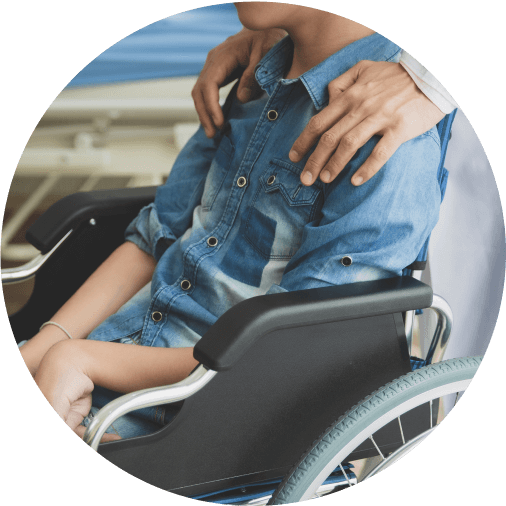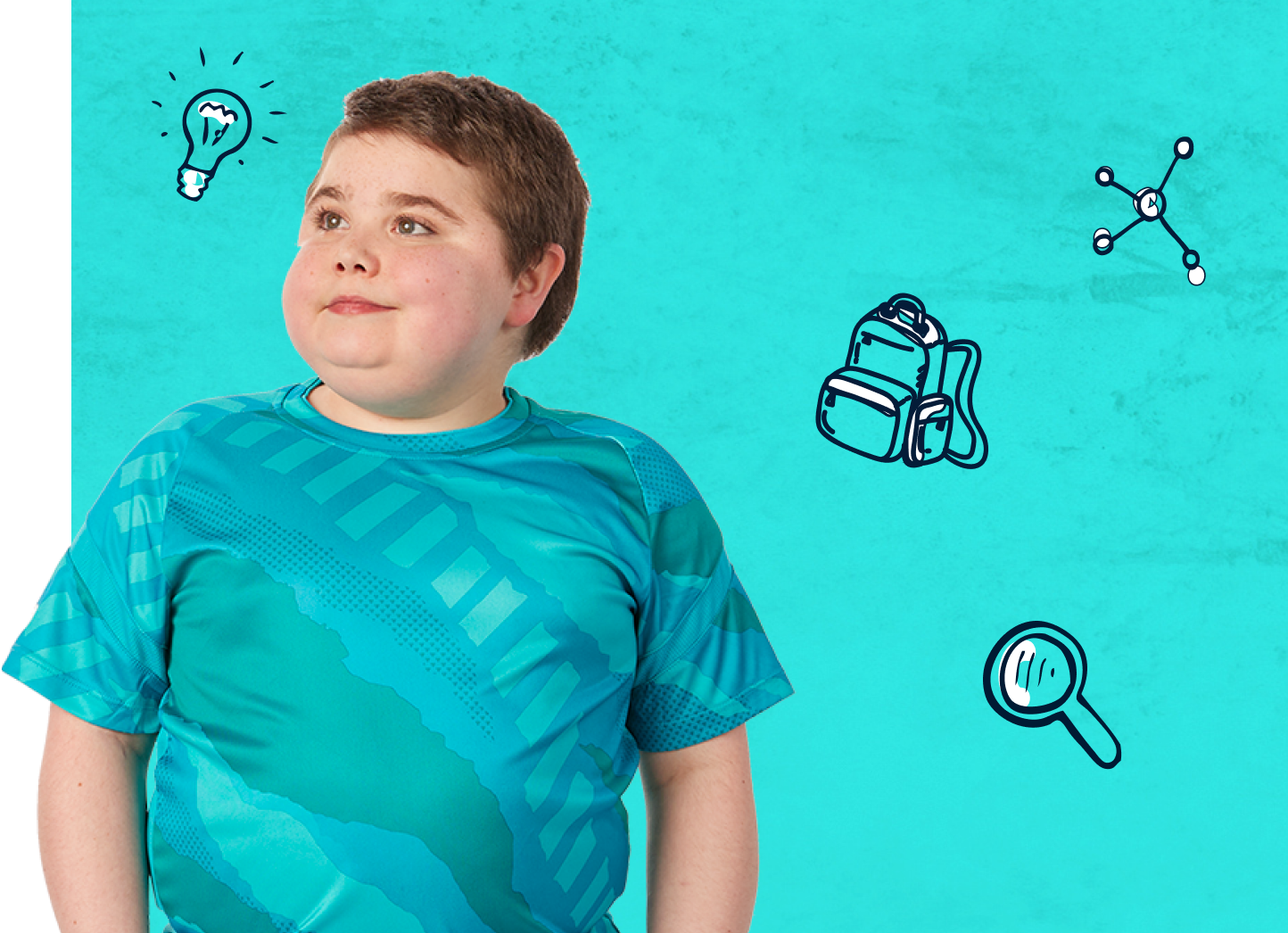
You’ve come to the right place.
We Speak Duchenne is here to help break down information about DMD.
This is Emmett, and he is living with Duchenne.
Emmett is a paid ambassador.

In order to function properly, our muscles need a vital protein called dystrophin.
Dystrophin is a key part of a group of proteins that all work together to strengthen and protect muscles as they contract and relax.

The dystrophin gene (“DMD gene”) makes our body’s dystrophin protein. This gene has 79 individual sections, called exons.
Each exon makes one piece of our body’s dystrophin protein. Due to a genetic mutation, people with Duchenne are missing one or more exons from their DMD gene. This prevents their body from making usable dystrophin.

Without usable dystrophin, people with Duchenne gradually lose healthy muscle tissue. This leads to common DMD symptoms, such as:




Research suggests that having dystrophin levels of just 0.5–5% of normal may be enough to slow the progression of Duchenne in some people. Ask your child’s doctor about their specific genetic mutation to see if increasing dystrophin might be an option.


Ideally, increasing dystrophin in a person with Duchenne should happen as soon as possible, since the more time passes, the more muscle is lost. Knowing the genetic mutation of a person with Duchenne is vital because it may help maximize their treatment plan by increasing their dystrophin.
Staying informed can help your family feel more supported. Sign up to receive helpful Duchenne resources by email.


This is Brantley, and he is living with Duchenne. Brantley is a paid ambassador.

There are different ways to increase dystrophin in people with Duchenne.